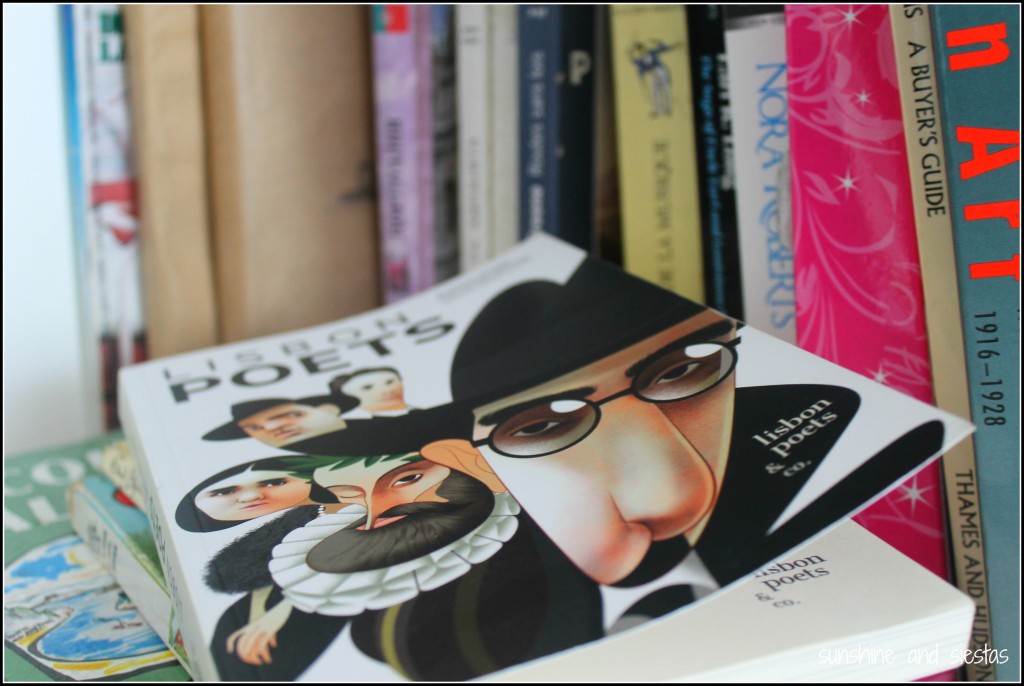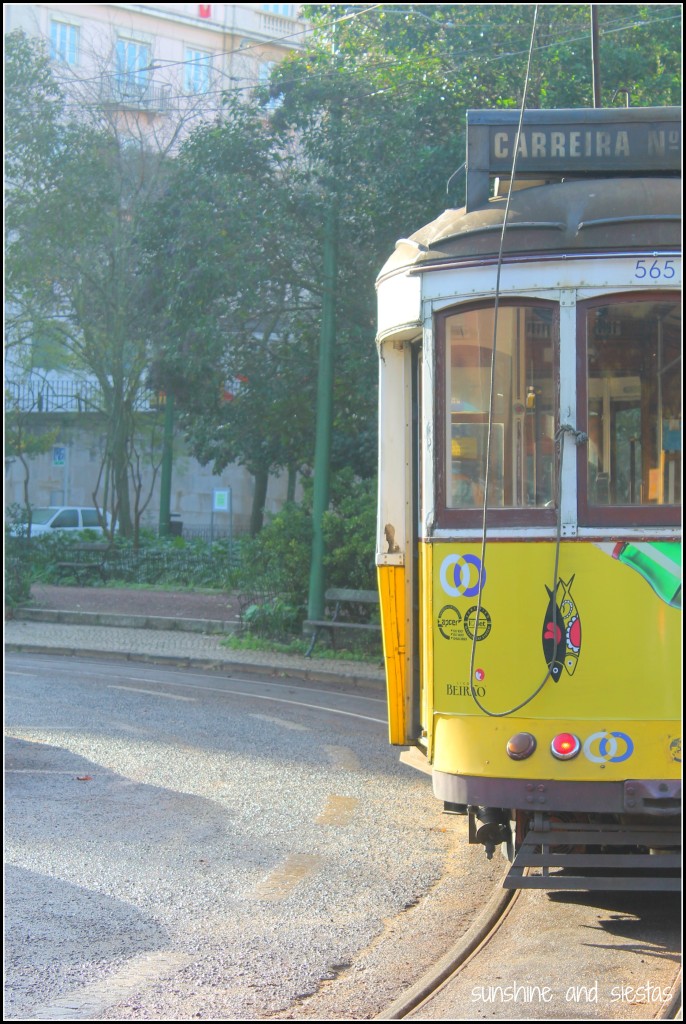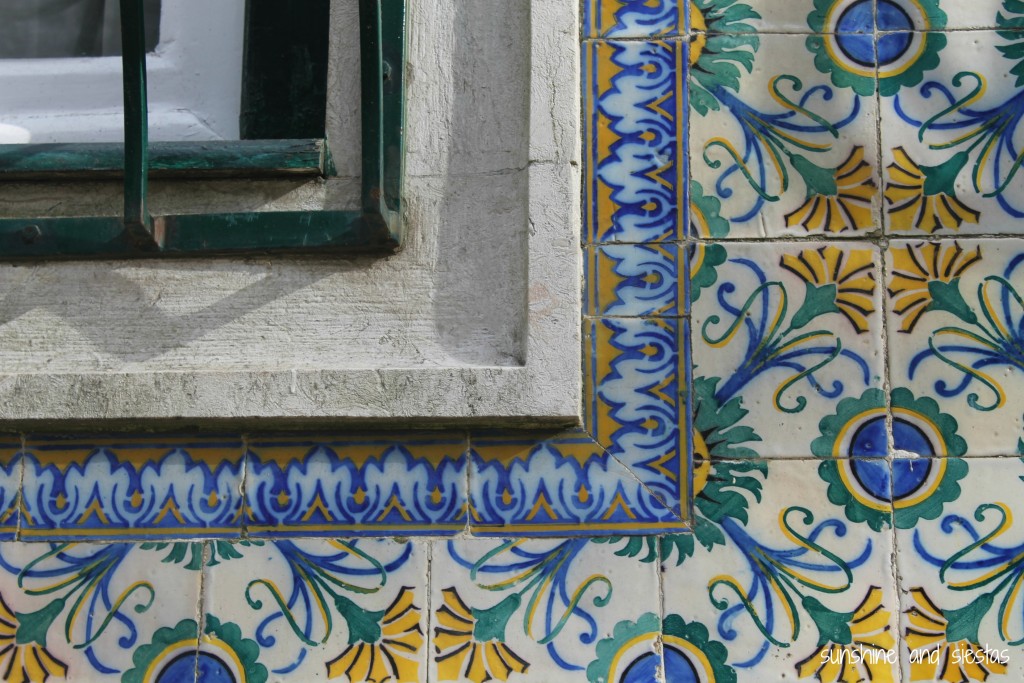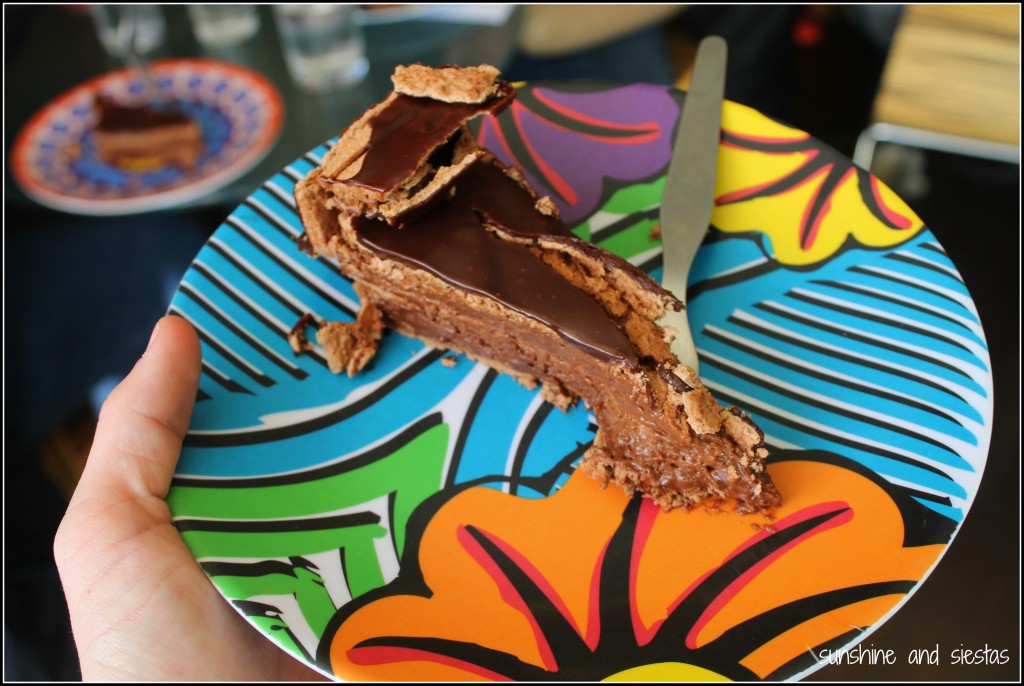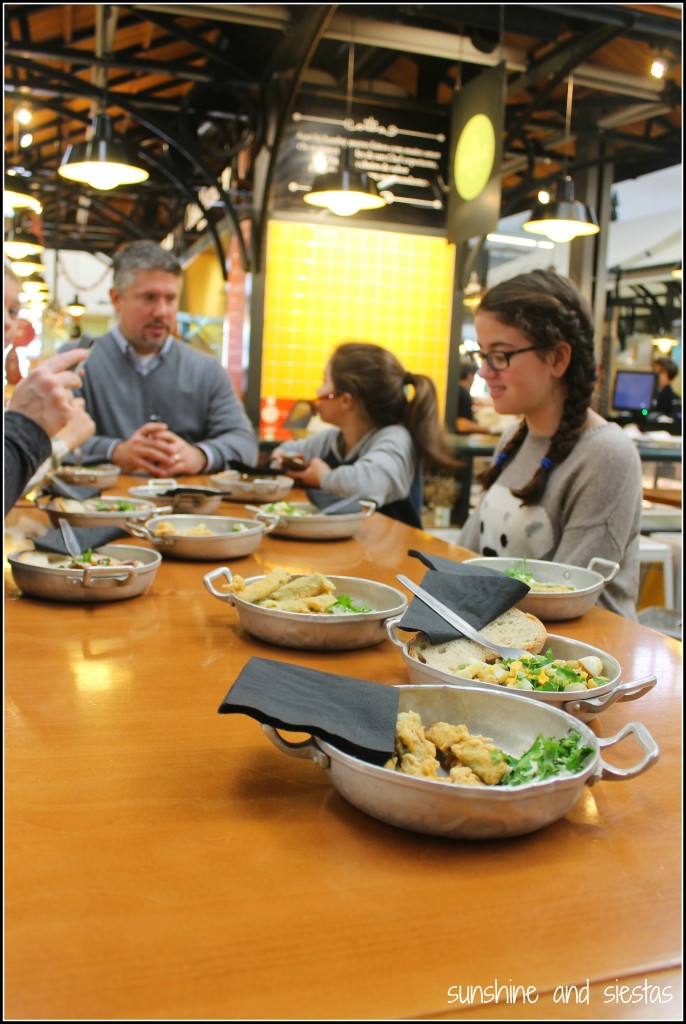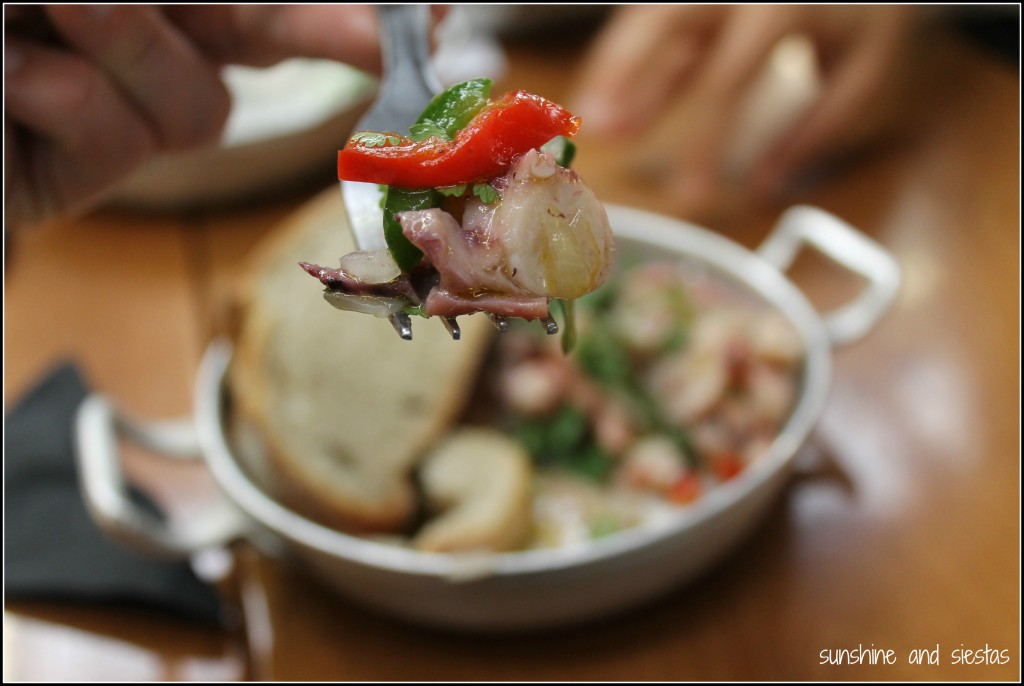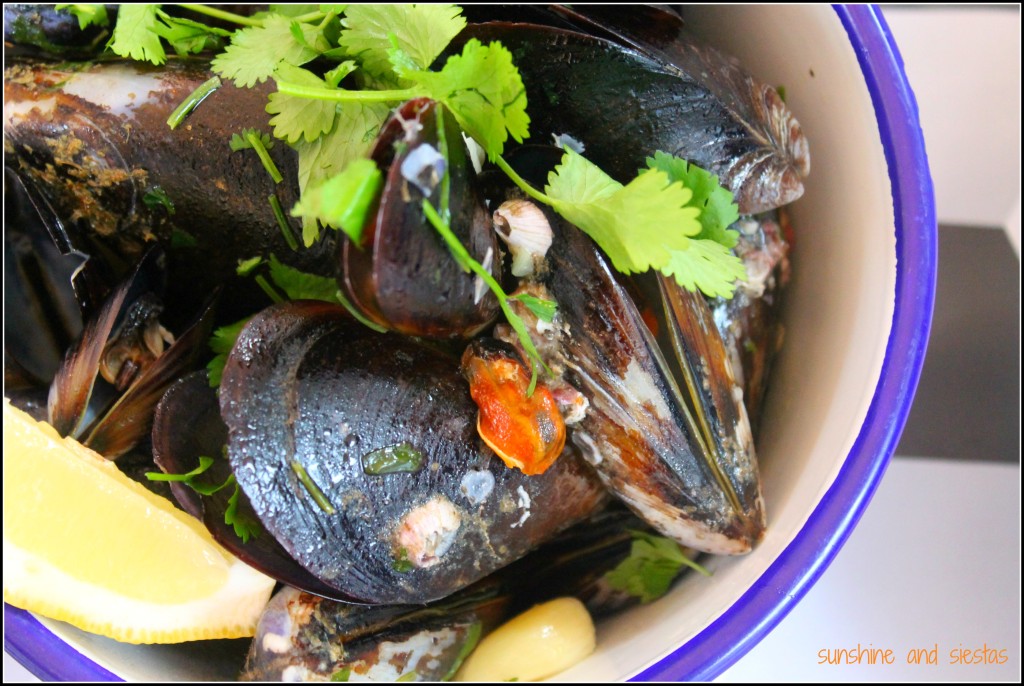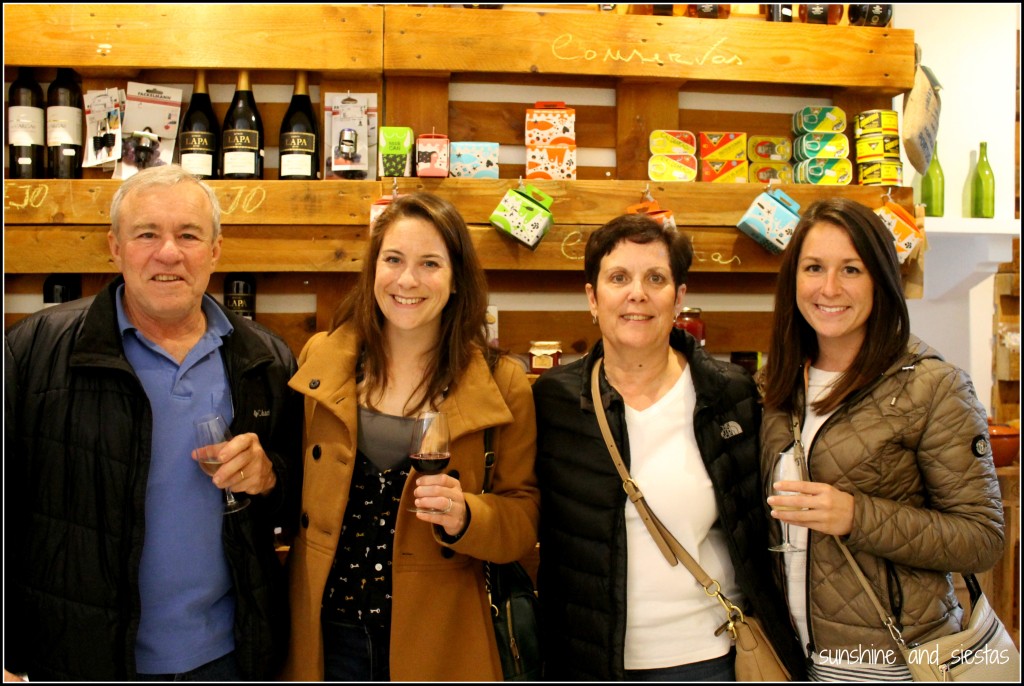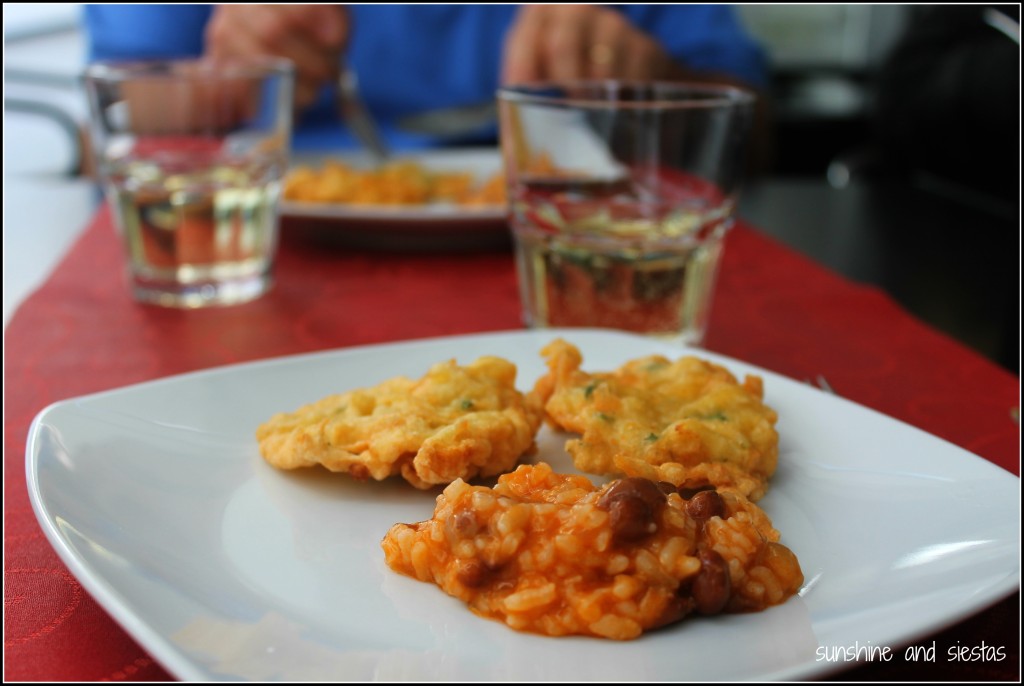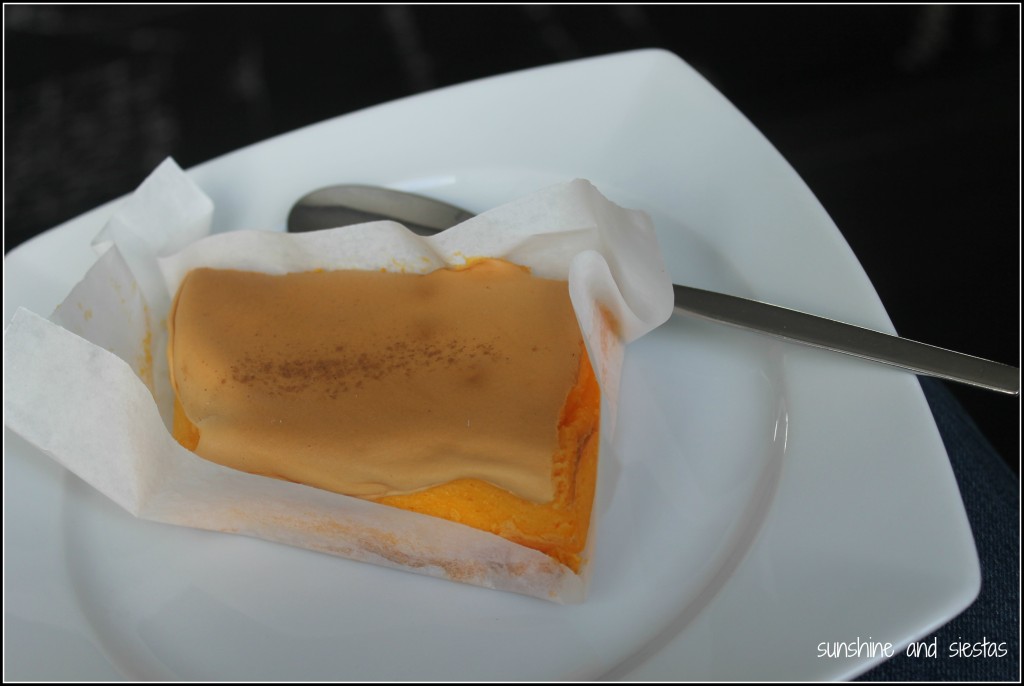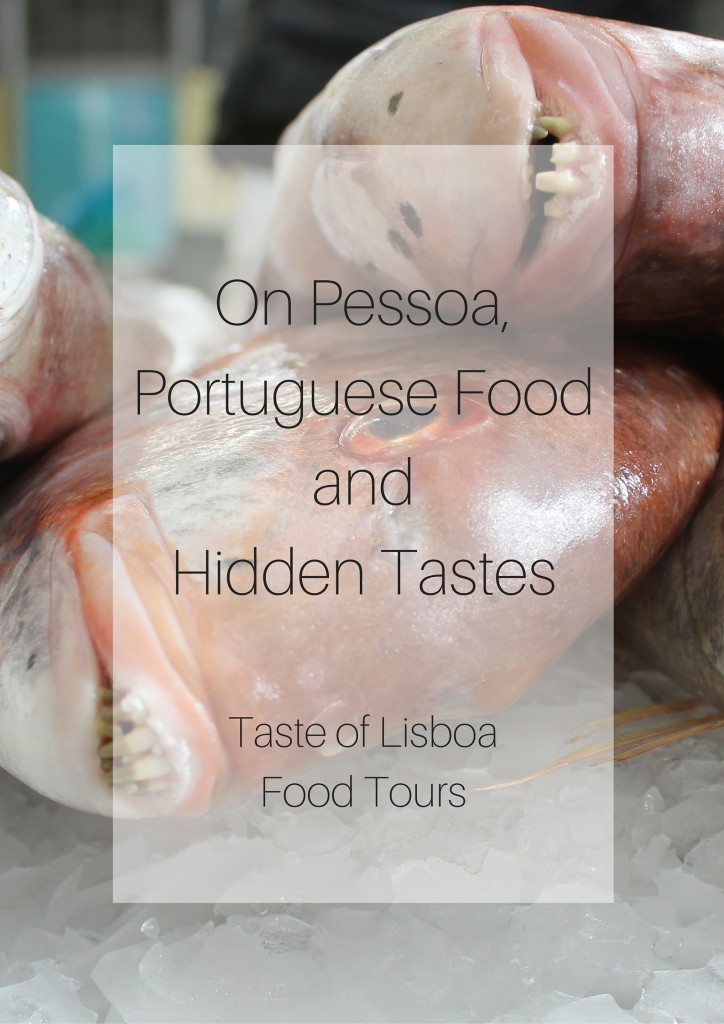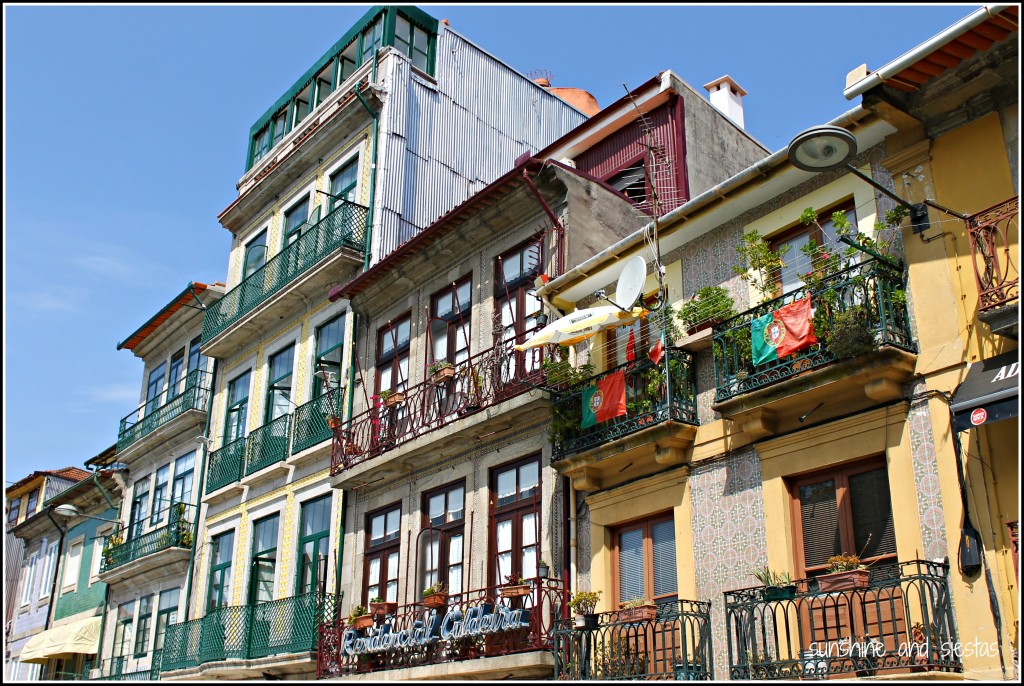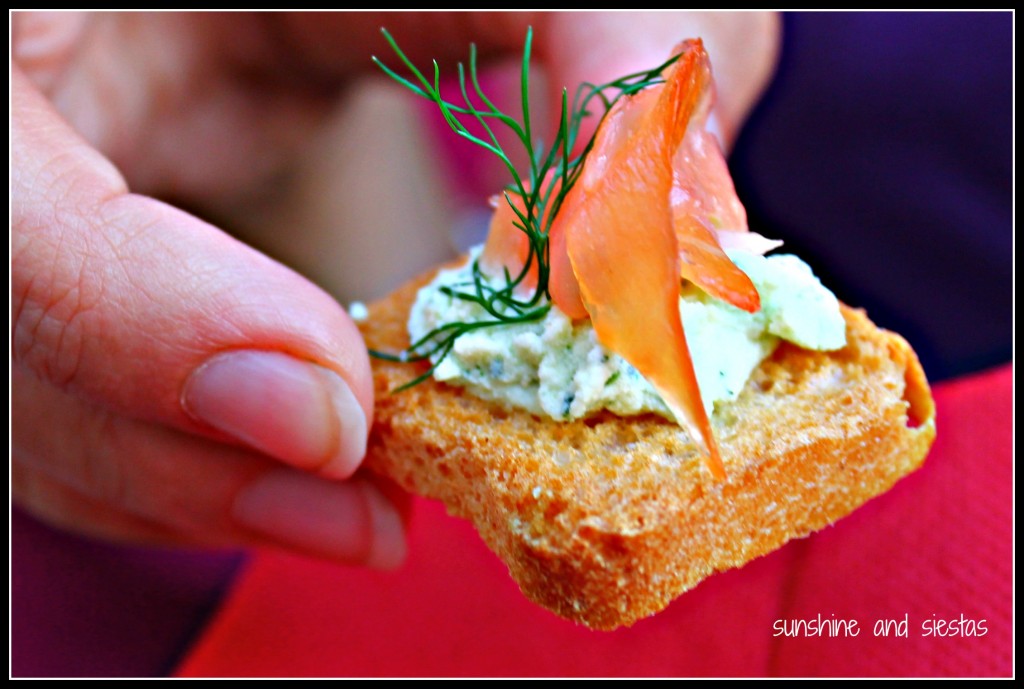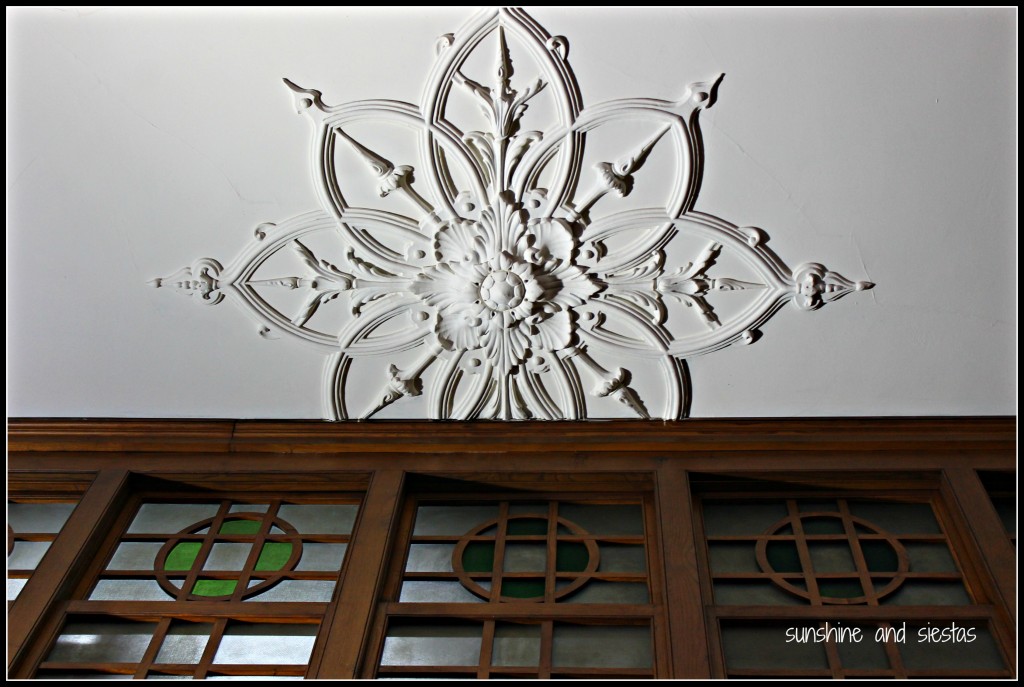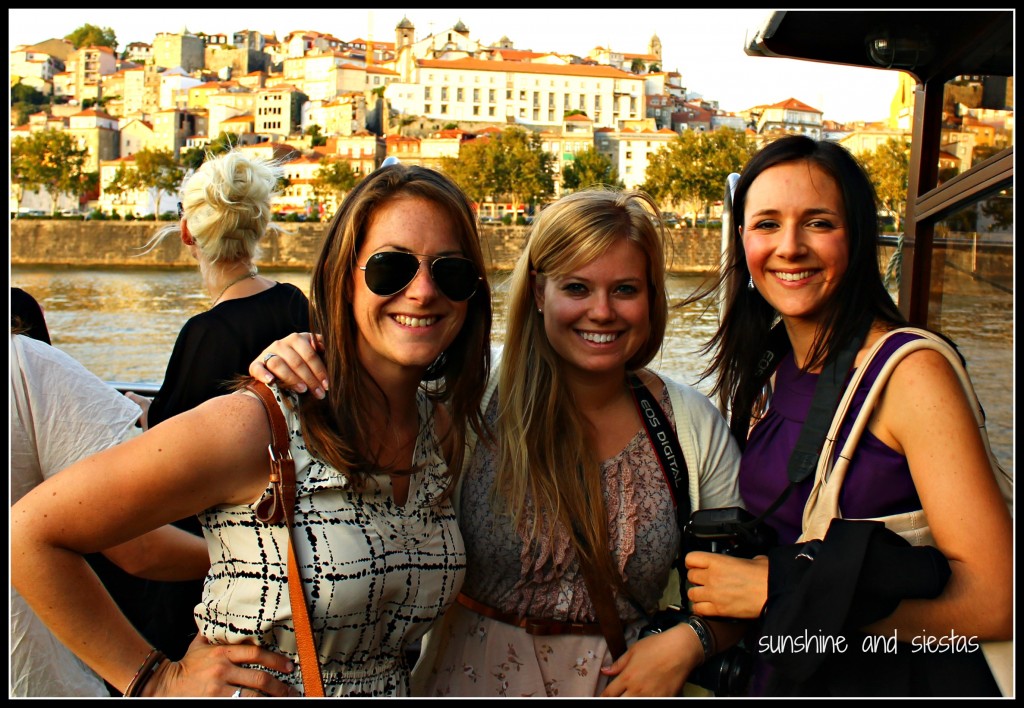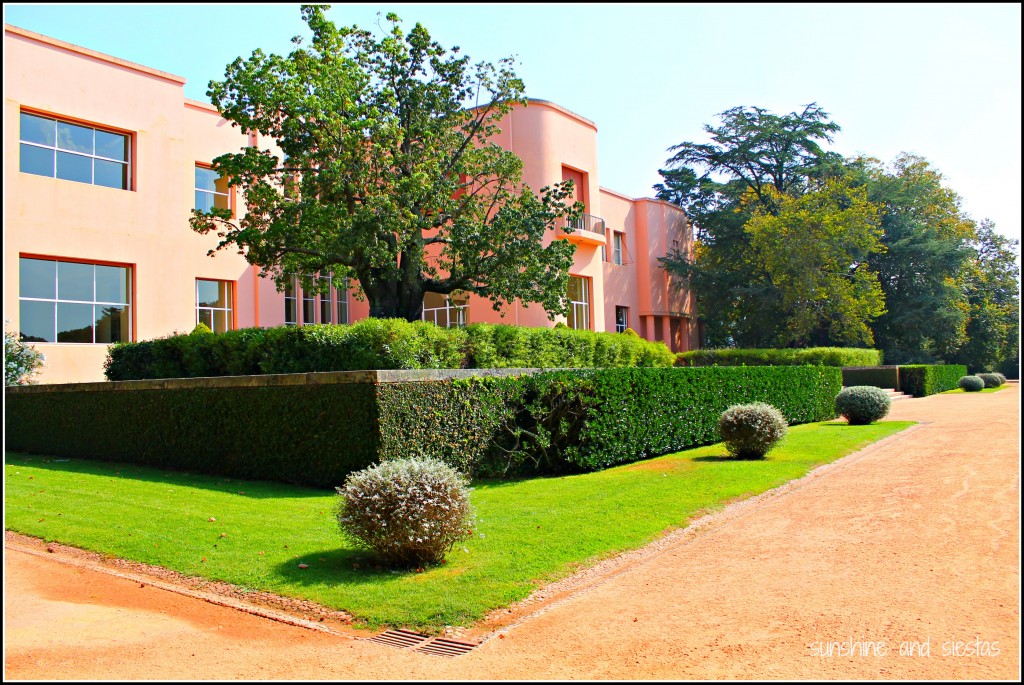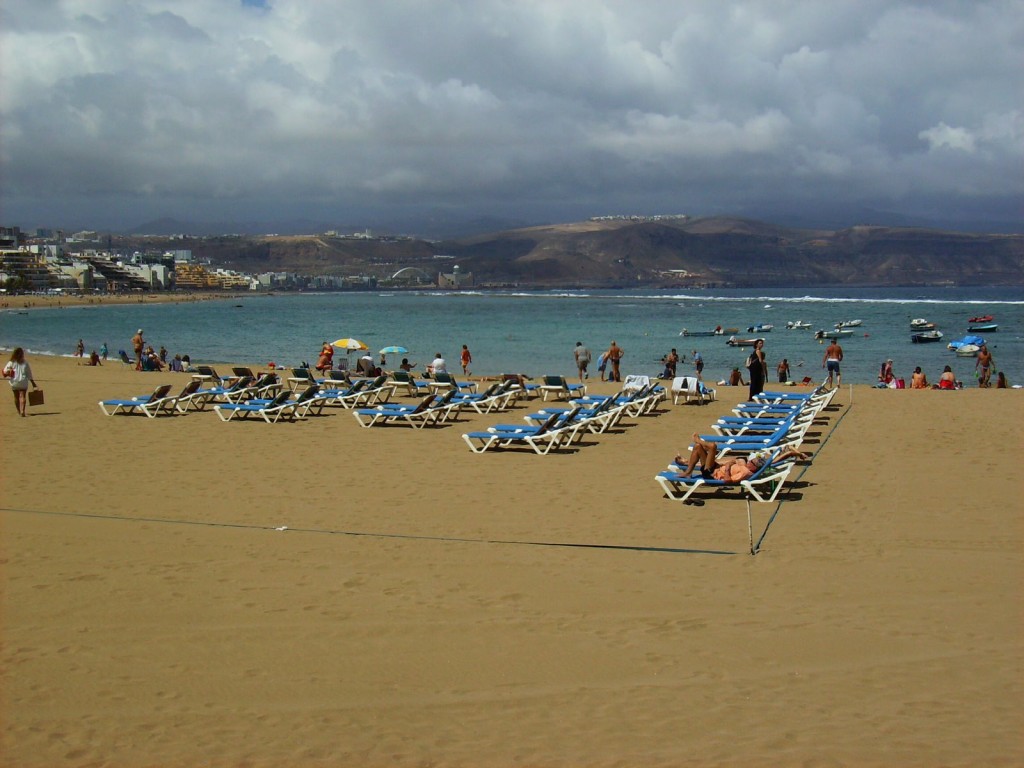The prolific Portuguese philosopher and writer Fernando Pessoa had no less than 80 heteronyms, facets of his personality re-imagined as thinkers and poets in his most notable works. And from his home in Campo de Ourique, where he lived on the last decade-and-a-half of his life, he explored the many sides of human life.
And for someone who knew very little of Portuguese food outside of pasteis de Belem and mil manheras of serving cod, a historical food tour with Taste of Lisboa introduced me not only to Pessoa and his neighborhood, but of the multi-faceted nature of Portuguese cuisine from the very district where food trends are born.
Warning: no bachalau or custard tarts were consumed on this tour.
Climbing the historic Tram 28’s route that snakes through Graça, Alfama, Chaido and Estrela, we left Tourist Lisbon on six of the city’s seven hills and climbed higher on Colina Saõ Roque towards Campo de Ourique and the Prazeres Cemetery. Aptly named the Cemetery of Pleasures, our three-hour tour would begin here and wind us around to taste some of Lisbon’s most pleasurable treats.
Lisbon and I have had a complicated relationship since 2007, when I struggled to understand the city’s vibe, its colorful history and why everyone seemed to love it so much. My country list then could be counted on two hands, and I had yet to learn how to be a savvy traveler. This meant far too many pastries and far too much money spent at mediocre touristic restaurants near Baixa. A second trip in 2011 was plagued by rain and that too-long-to-look-up-its-name volcanic eruption. Tiled homes, an empty hillside castle and Sagres imperiales were my biggest takeaways from Spain’s westernly neighbor.
Campo de Ourique was sleepy on a Tuesday morning as shops opened a few minutes past the hour and locals crowded into cafes for an espresso to accompany their flaky pastries. We got off a stop too early, giving us time to wander the parish’s main thoroughfares before meeting Filipa, a Lisboner and lifelong foodie who began Taste of Lisboa two years ago.
Like all food tours, there is an exchange of pleasantries. Where are you from? How did you hear about the tour? Oh, you blog and we have friends in common? I’d been told of the friendliness of the Portuguese, and with a wink and a few jabs at Spanish cuisine and culture, Filipa became a foodie friend.
The location for a food tour was no accident, though we’d picked it for its minimal walking – Campo de Ourique, a historically upper-middle class district considered a city within a city, bustles with concept restaurants, budding chefs and a part-market, part-international food haven sat squarely in the middle. From the start, I was surprised to find that cod had been left (mostly) off of the menu, anda sweet treat was up first.
“Unlike the Spaniards, we are quite humble when it comes to our cuisine,” Filipa stated, looking squarely at me. “But this is not something we claim for our sweets. Our chocolate cake is the best in the world.”
The small pastry shop, imaginatively named O Melhor Bolo de Chocolate do Mundo, had just two round tables and eight chairs for our group of 11. I am one of those foodie anomalies – gasp! I don’t like chocolate! – but as the creator of the world’s best chocolate cake, Carlos Braz Lopes, turned up in the shop, I eagerly shoveled it into my mouth.
With a espresso cup of port wine on the house, we toasted what could be the best slice of cake I’ve ever had, layered with bitter chocolate and meringue. Portuguese custard and egg sweets may be known worldwide, but I was astonished at the complexity of a simple cake made from six ingredients that had been created by a former businessman with a killer sweet tooth (psst! There’s a shop in Madrid!).
Just across the street is the newly remodeled Mercado de Campo de Ourique, a fusion of traditional Portuguese cookery and fare with a fish and vegetable market. Tile-lined food stalls ring the perimeter, with high tables and stools occupying the center, much like Madrid’s Mercado de San Miguel. For someone who shops in a market regularly, I was drawn to the food more than the googly-eyed fish near the entrance.
Filipa brought us right to the salads stand. As Catholics and a people whose history is rich with seafaring explorers and far-flung colonies, Portuguese food combines ingredients from all over the world, making Spanish stews and legumes seem rudimentary and almost convoluted. Even the octopus salad I ordered brought out new flavors from one of my go-to summer dishes, flavored with a touch of cilantro and sweet red pepper instead of tomatoes.
We ordered several dishes, all with a legume and fish base, like black eyed peas with flaky cod and tuna. As the food cooked, we sampled fried pork skin laced with black pepper, leitão à bairrada, and learned the origin of convent sweets – an abundance of eggs and flour plus sugar-hungry, bored nuns.
Perhaps the biggest surprise were the peixinhos da horta, or the small fish of the garden, green beans fried in tempura, another Portuguese invention born out of the Lenten tradition to abstain from meat. Tempura itself was created here, though perfected in Asia.
Mussels were next on the list, and Filipa led us to a concept bar where there’s little else on the menu but the clams and craft beer. Like Spain’s recent craft beer explosion, small batch breweries are elbowing into Sagres’s cornered market while producing not only great flavors but sexy marketing and names that poke fun at gluttony and excess.
And then there were the mussels themselves, cooked in butter and full cloves of garlic and seasoned with cilantro and a bit of lemon. Normally one to pass up the mollusks in favor of altramuces or boiled shrimp at a cervecería, I bravely took the first two bites to remind my family that half the fun of traveling is trying new foods.
The buttery flavor against the salty squish of the orange flesh added a different dimension to the mejillones I’d tried and quickly dismissed in my early days in Spain. I dug in to the brimming buckets, happy as a clam (pun intended) to have some time to visit with the other two American families who had joined us. The three young girls between them – no older than 12 – were pulling apart the had, shiny shells and slurping the mollusks down between sips of water.
Pessoa was a man of fine wine and ginjha, a cherry liquor served in nondescript, closet-sized bars. A Brasileira, the Cafe Irún to Pessoa’s Hemingway, is one of Lisbon’s oldest and most beloved cafes, and Pessoa is rumored to have sipped bica, espresso with sugar, and absinthe here with the occasional wine.
“Life is good, but wine is better,” he said of his love of the drink.
I’ve long enjoyed port wine and the vinhos verdes, or young wines, cultivated in the Minho province. Filipa took us next to taste different wines from the country’s 2700 hectares of vineyards. In true neighborhood shop fashion, locals can bring their own bottles or wine glasses, try a few varieties, and then bottle up and take home their favorites.
Paired with a strong cheese and quince paste, even my mother enjoyed them.
The next stop had us in front of Pessoa’s last residence, right in the heart of Campo de Ourique. Crumbling buildings covered in tiles sandwiched the small museum, housed in an apartment complex, and its award-winning restaurant, which served us cod fritters (they were, sadly, forgettable, so excuse the claim that I ate no cod on the tour) and a creamy rice with another glass of wine.
Having consumed several dishes by this point and being in the very place where Pessoa’s landmark book, Disquiet, was found after his death, I had a completely different perception of Portuguese food and its intricacies. Like a human being, its relationships as much as its evolution and environment make it what it is, and different situations call for a multitude of adaptations.
Portugal’s tangled history is perhaps the cuisine’s biggest element, but there is much more than meets the eye – and stomach, for that matter.
Campo de Ourique had one more dish for us to try, this time in the city’s hospitality school and concept restaurant. Just as we’d started the day with sweets, we’d end with a spongecake, pão de lo, made with nothing more than yolks, flour and sugar.
Proving once more that I knew absolutely nothing about Portuguese food, my spoon sliced into the toasty top of the cake, cutting into a creamy, spongy substance that in no way resembled the sponge cake I’d made as a kid for summer picnics. I scraped the waxy paper holding it all together, eager for the last few sticky crumbs.
Fernando Pessoa once said, “I have no philosophy: I have senses.” And I think I just found mine when it comes to tastes and food prejudices. The tour was more than just a way to spend a few hours with my family and share my travel style with them (and making Christmas shopping a one-gift production).
Lisbon and I had finally found a common ground: good food.
I paid my own way on the Taste of Lisboa Food Tour; all opinions are my own and do not reflect a collaboration between SandS and Taste of Lisboa or any of its affiliates. You can find out more about Filipa’s food tours and courses on Taste of Lisboa’s website.
